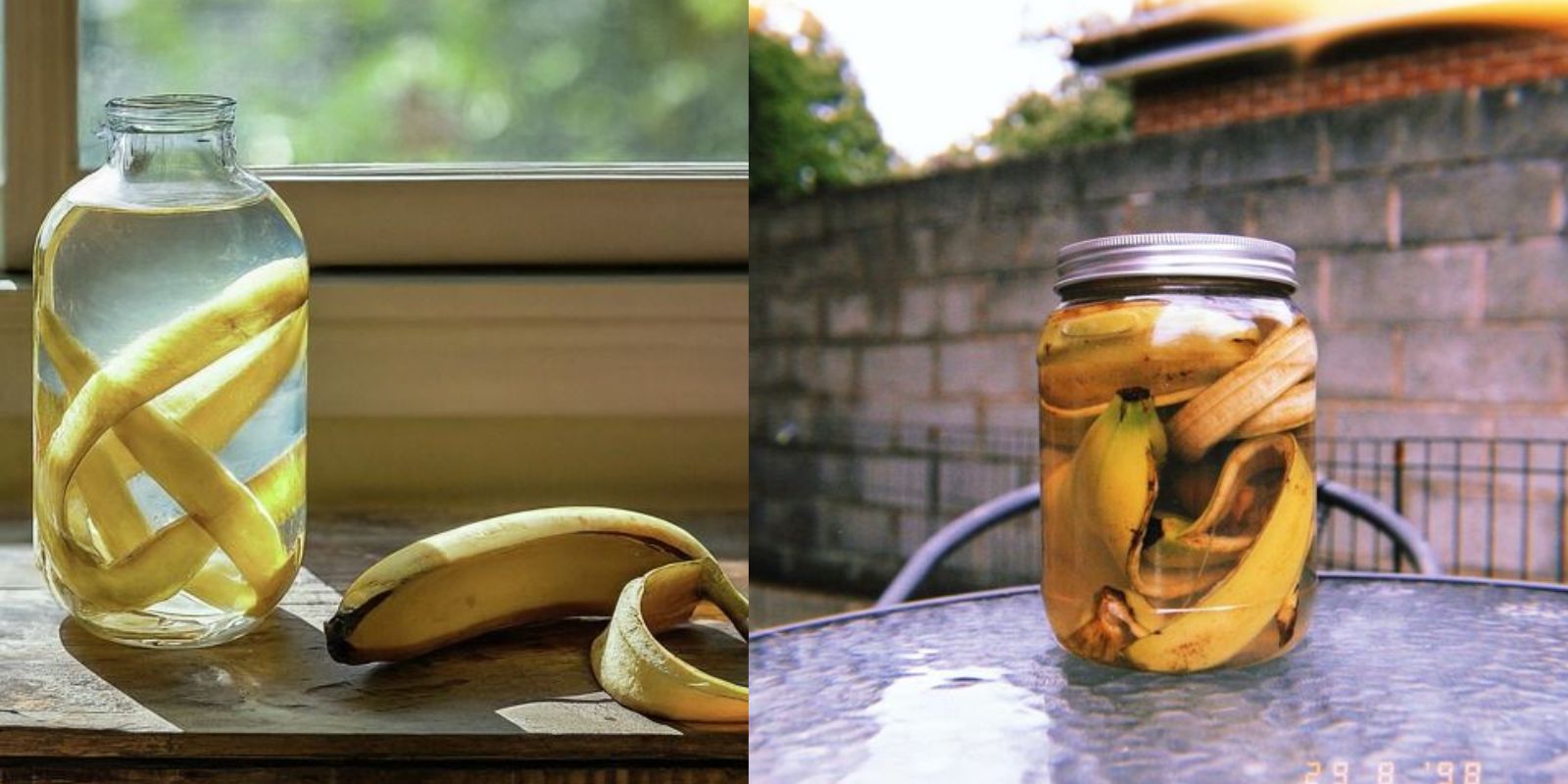Banana peels, often tossed aside as mere waste, are actually full of untapped potential. By placing banana peels in a bottle, you can unlock a range of fascinating and practical benefits. From natural fertilizers to homemade cleaning solutions, banana peels offer a variety of uses that might surprise you. In this article, we’ll delve into the intriguing process of placing banana peels in a bottle and explore the potential benefits and outcomes of this simple yet innovative experiment.
Introduction: The Power of Banana Peels
Banana peels are rich in nutrients, antioxidants, and compounds that can be repurposed for various practical applications. While often overlooked, these peels contain valuable resources that can enhance gardening, cleaning, and even personal care. By conducting a simple experiment of placing banana peels in a bottle, you can discover how these unassuming scraps can be transformed into useful solutions.
The Experiment: Steps to Place Banana Peels in a Bottle
1. Collect Banana Peels
Start by saving banana peels after enjoying the fruit. Ensure the peels are fresh and free from any mold or decay. The better the quality of the peels, the more effective your experiment will be. If you have multiple peels, you can use them all or save some for future experiments.
2. Prepare a Bottle
Find a clean, empty bottle or jar with a secure lid. A glass jar or plastic bottle works well for this purpose. Make sure the bottle is thoroughly cleaned to avoid contamination. If using a plastic bottle, consider using one with a wider mouth to make it easier to insert the peels.
3. Insert the Peels
Carefully place the banana peels inside the bottle. You can cut or tear the peels into smaller pieces if needed to fit them comfortably inside. The peels should be packed tightly but not crammed, allowing some airspace to facilitate the process.
4. Seal and Store
Once the peels are inside, close the bottle tightly with its lid. Store the bottle in a cool, dark place, such as a cupboard or pantry. This environment helps to maintain the peels’ integrity and promotes the breakdown of the materials over time.
5. Observe Changes
Over the next few weeks, observe the bottle for changes. You might notice several things happening inside: the production of a natural liquid, changes in aroma, or even a breakdown of the peels into a mushy substance. These changes are indicative of the various transformations occurring as the peels decompose.
Potential Outcomes and Uses
As you monitor the bottle, you may discover a range of beneficial outcomes and uses for the banana peels. Here are some of the most common and useful results:
1. Natural Fertilizer
One of the most popular uses for banana peels is as a natural fertilizer. As the peels decompose, they release nutrients such as potassium, phosphorus, and calcium into the liquid inside the bottle. This nutrient-rich solution can be used to enhance the soil in your garden. Simply dilute the liquid with water and apply it to your plants as a natural fertilizer.
2. Homemade Plant Growth Enhancer
In addition to being a fertilizer, the banana peel liquid can serve as a plant growth enhancer. The nutrients and organic matter in the liquid help improve soil health and encourage stronger plant growth. Apply it to the base of your plants or mix it into your compost for added benefits.
3. Cleaning Solution
Banana peels can also be used to create a natural cleaning solution. The decomposing peels release compounds that can be effective in cleaning surfaces and polishing. Strain the liquid and use it to clean countertops, appliances, or even shine up metal surfaces. The natural oils in the peels help cut through grime and add a shine.
4. Pest Repellent
Banana peels can act as a natural pest repellent. The decomposition process releases compounds that deter pests like aphids and mosquitoes. You can use the liquid as a spray in your garden to keep these unwanted guests at bay. Just be sure to strain the liquid and transfer it to a spray bottle before application.
5. Compost Enhancer
If you’re a composting enthusiast, banana peels can enhance your compost pile. The decomposing peels contribute valuable nutrients and organic matter to the compost, helping to accelerate the decomposition process and enrich the final compost product.
6. Deodorizer
The liquid from decomposing banana peels can also serve as a natural deodorizer. The compounds released during decomposition help neutralize odors in your home. Place a bowl of the liquid in areas prone to unpleasant smells or use it to freshen up your garbage disposal.
7. Skin Care
The nutrients and natural oils in banana peels have potential benefits for skin care. Although not directly related to the bottle experiment, you can use the peels for DIY face masks or skin treatments. The antioxidants and vitamins in banana peels help nourish and soothe the skin.
Tips for Success
- Regular Monitoring: Check the bottle periodically to observe changes and ensure the process is progressing as expected.
- Avoid Overcrowding: Ensure the bottle is not too crowded with peels, as this can hinder the decomposition process.
- Use Proper Ventilation: If you notice a strong odor, make sure the bottle is stored in a well-ventilated area to prevent unpleasant smells from building up.
Conclusion
Placing banana peels in a bottle is a simple yet fascinating experiment that reveals the incredible potential of these often-discarded scraps. From natural fertilizers and cleaning solutions to pest repellents and compost enhancers, banana peels offer a range of practical uses that benefit both your garden and home. By harnessing the power of banana peels, you can embrace a more sustainable approach to waste management and make the most of every part of the fruit.
Ready to explore the hidden benefits of banana peels? Try this experiment and share your observations or ask for advice below! 🍌🔍🌿

